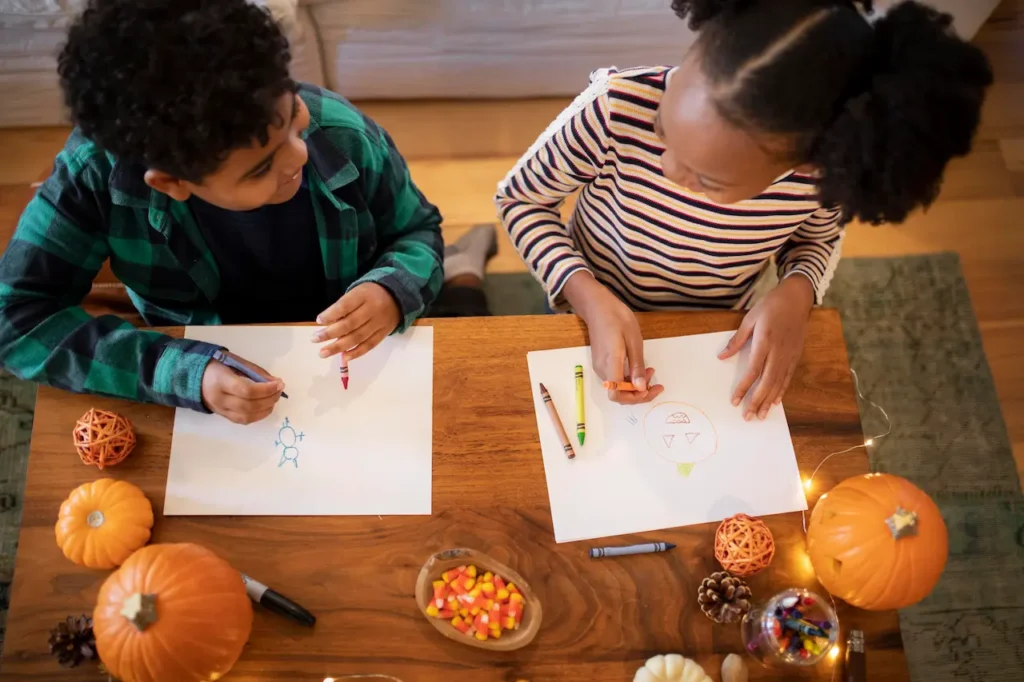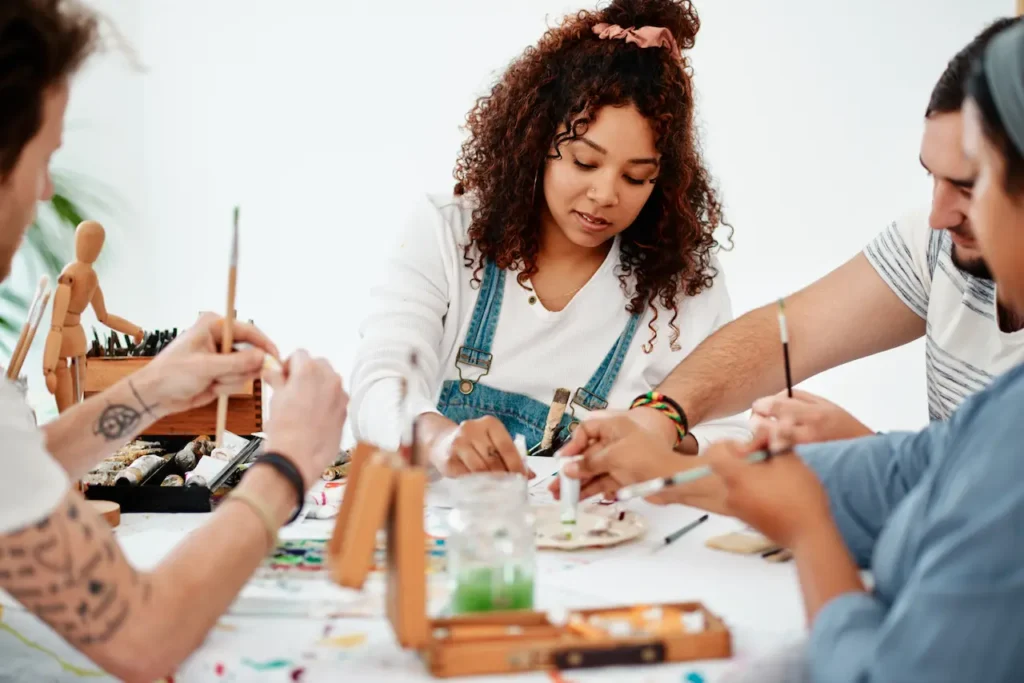Anne C. Mosey, PhD, OT, FAOTA (1938–2017), is a pioneer in occupational therapy, known for establishing a theoretical foundation for the profession. Mosey saw groups as a place for occupational therapists to evaluate and develop clients’ social interaction skills.
Mosey identified 5 developmental group levels that mirror the way children learn to interact and collaborate, progressing from basic to advanced group dynamics. These 5 developmental groups have the purpose of assisting clients in learning group interaction skills.
The 5 Types of Developmental Groups
- Parallel Group
Focus: Developing awareness of others while performing individual tasks.
Key Example: Group members engage in activities side by side, such as drawing or watching a movie, with minimal interaction. - Project Group
Focus: Short-term collaboration to achieve a common task, to encourage cooperation, healthy competition, and sharing.
Key Example: Completing a puzzle together while learning to cooperate and share responsibilities. - Egocentric-Cooperative Group
Focus: Collaborative task completion while respecting individual roles.
Key Example: Group members work together to make a meal, dividing tasks and communicating effectively. - Cooperative Group
Focus: Sharing emotions, challenges, and mutual experiences.
Key Example: A grief support group where participants openly share memories and feelings. - Mature Group
Focus: Achieving a task with balanced roles and group dynamics.
Key Example: A community group that plans and executes an event, prioritizing the group’s needs over individual desires.
Mosey’s Leadership Styles
Mosey outlined leadership styles that therapists should use depending on the group’s developmental level:
| Group Level | Leadership Style |
| 1. Parallel Group | Directive |
| 2. Project Group | Directive |
| 3. Egocentric-Cooperative Group | Facilitative |
| 4. Cooperative Group | Advisory |
| 5. Mature Group | Participatory |
These leadership styles ensure that group members receive appropriate guidance as they progress from minimal interaction to mature collaboration.
Why Are Developmental Groups Important in Occupational Therapy?
- Enhancing Social Interaction: Groups mimic real-life interactions, enabling clients to develop essential communication and teamwork skills.
- Progressive Social Skill Building: Starting with individual goals (Parallel) and progressing to shared goals (Mature) mirrors normal developmental stages.
Take the Next Step Toward OT Mastery
Understanding Mosey’s developmental groups is key to excelling in occupational therapy and performing well on the NBCOT® exam. Our comprehensive course offers:
- In-depth explanations of all 5 developmental group levels.
- Real-life examples and case studies for better understanding.
- Practice quizzes and interactive content to solidify knowledge.
Want detailed practice tips to ace the NBCOT® exam? Join now for full access!
What are the main types of developmental groups in Mosey’s model?
Mosey’s model outlines five types of developmental groups: Parallel Group, Project Group, Egocentric-Cooperative Group, Cooperative Group, and Mature Group, each representing different stages of social interaction and task collaboration.
How does an occupational therapy practitioner’s role change across Mosey's groups?
The practitioner starts with a directive leadership style in Parallel and Project Groups, shifts to facilitative in Egocentric-Cooperative Groups, adopts an advisory role in Cooperative Groups, and participates collaboratively in Mature Groups, reflecting increasing group competence.
What differentiates Project Groups from Parallel Groups in occupational therapy?
In Parallel Groups, the focus is on individual tasks with minimal group interaction. In contrast, Project Groups emphasize collaborative short-term tasks, with members working together to complete tasks that require teamwork and shared responsibilities.
Why are developmental groups important in occupational therapy?
Developmental groups are crucial as they simulate social interaction dynamics, enhancing real-world communication and teamwork skills. They guide clients through natural social development stages, from individual task engagement to complex group participation.
How can mastering Mosey’s developmental groups benefit occupational therapy practitioners?
Understanding these groups is vital for effective therapy and for success in the NBCOT® exam. Practitioners can benefit from a structured approach to developing clients’ social skills, using real-life case studies and practice quizzes to deepen their knowledge.







